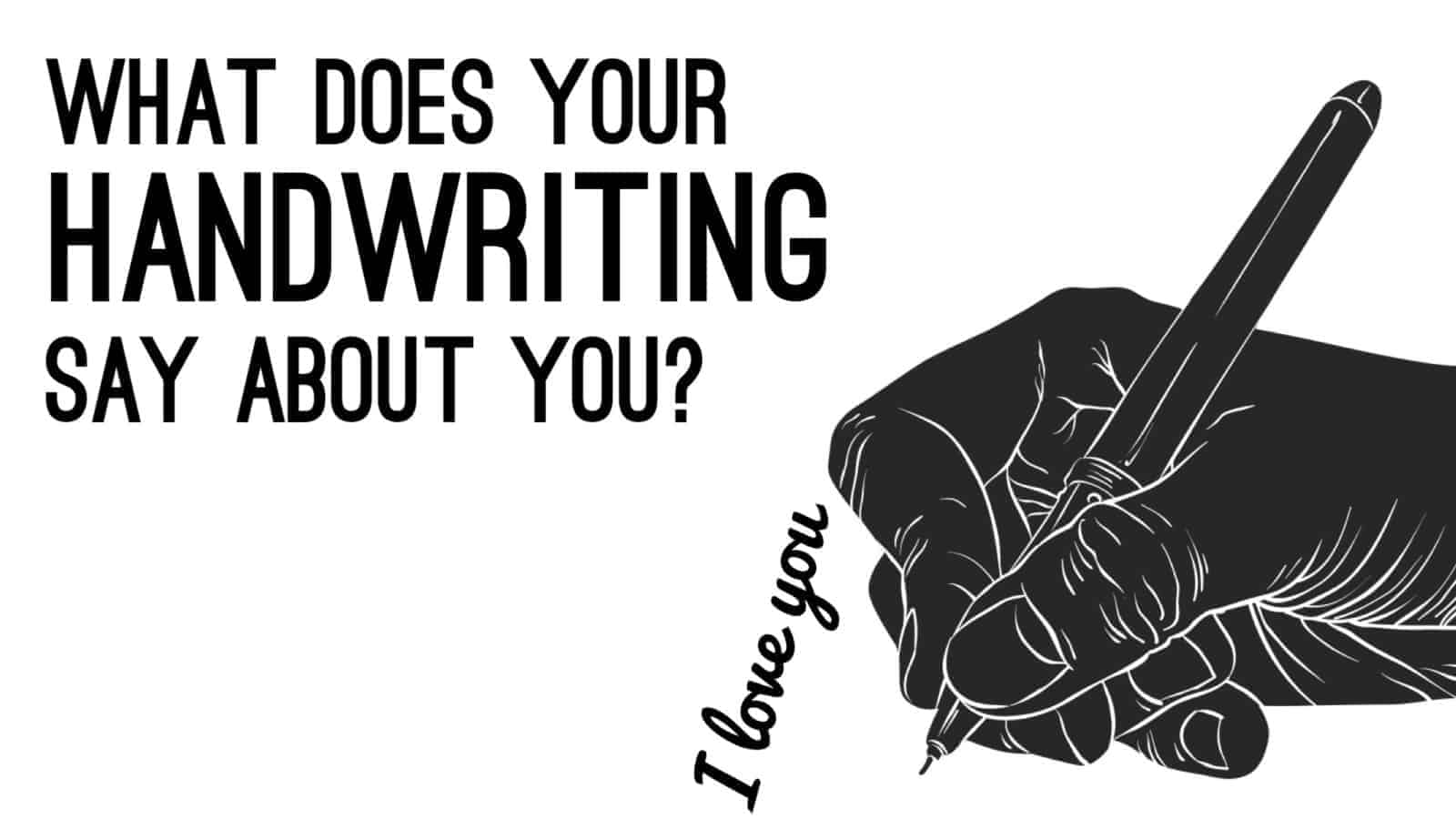Did you know that graphology – the study of handwriting – has been around since the great philosopher Aristotle? That’s right; people have studied one another’s handwriting for over 2,500 years.
Today, graphology is used for a variety of purposes, including psychological testing, employee selection, and even criminal investigations. How a person writes, according to the British Institute of Graphologists (BIG), can be used in “any area of human activity,” such as personality profiling, forensic analysis, and career guidance.
“When you get to know a person’s handwriting well enough, you recognize what script it is, just as if it were a well-known painting or photograph. Graphology is based on the principle that every individual’s handwriting has a character of its own, and this is entirely due to the uniqueness of the writer’s personality.” ~ The British Institute of Graphologists
“What’s the rationale for graphology?”
On the surface, handwriting analysis may seem a bit quirky. However, considering that we all write differently, it’s fair to say that something – our genetics, personality traits, habits, frame of mind – is also different.
BIG makes a couple of noteworthy observations:
“We were all taught to write in a specific way when we were children … but it is evident (that) everyone’s handwriting looks different. In fact, as soon as someone can write, he or she gradually alters the shapes and sizes of letters in accordance with (likes) and dislikes.”
Ultimately, the central principle of graphological practice is summed up as follows: “… handwriting is the pattern of our psychology expressed in symbols on the page, and these symbols are as unique as our own DNA.”
“A blend of art and science.”
The written word comprises three elements: movement, spacing and form. Graphologists place particular emphasis on form when analyzing how one writes. When observing form, graphologists focus on angles, slants, and spacing.
The above is the scientific aspect of graphology – but there is an “art” to the science. That is, experts also consider individual circumstances (setting, situation) in the analysis. So, graphology is somewhat of an “abstract science.”
Graphology and personality traits
Anyone else thinking of the scene when Sherlock Holmes analyzed Professor Moriarty’s signature in Sherlock Holmes: A Game of Shadows? Ha-ha. Awesome scene… anyways, it is relevant to this section.
One area where graphology has been widely utilized is in the study of personality traits. According to master graphologist Kathi Knight, “Just from analyzing your handwriting, experts can find over 5,000 (traits.)”
What does your handwriting reveal?
Ok, do you have paper and pen ready? You’ll need one for this next part.
Let’s go!
Please write the following sentence in cursive: “The quick fox jumps over the lazy dog.”
Got it? Awesome. Now let’s see what a graphologist would say based on nine criteria.
Size
– If your letters are large, you’re probably more extraverted (outgoing.) Like many other people-oriented individuals, you may also love attention.
– If your letters are small, you’re likely to be quieter or shy – two behaviors strongly associated with introverts. You may also possess the stronger-than-average focus and concentration skills.
Slant
– If your writing slants to the right, you’re impulsive, gregarious, sentimental, and good-hearted. You also place the utmost importance on relationships with friends and family.
– If your writing is centered (no visible slant), you’re probably very logical and precise in thought. You may value logic over emotions. For you, pragmatism rules the day.
– If your writing slants to the left, you may be a more reserved person. When it comes to working, you’d rather focus more on things than people. In other words, you may want to avoid retail.
Pressure
– If your writing resembles a bold font, you may strongly feel emotions. You may also be a bit more reactionary in nature.
– If your writing is lighter-toned, you may be more relaxed in disposition. You tend to manage your energy wisely.
Upper zone (the ‘l’ and ‘t’ in your writing sample)
– If your ‘l’ loops widely, you may have big dreams and goals.
– If your ‘l’ is tighter in form, you may feel disheartened by not yet reaching your aspirations.
– When your ‘t’ is looped, you may take criticism harshly. You may also be somewhat of a suspicious person.
– If your ‘t’ is linear, you’re well-disciplined, a diligent worker, and self-controlled.
Lower zone (the ‘y’ in your sample)
– A tight ‘y’ (little to no loop) may indicate you keep a small circle of friends.
– A broad ‘y’ means you have a larger social circle.
– A long ‘y’ may signify that you love traveling.
– A short ‘y’ means you’re more of a homebody.
Letter connection
– If your cursive diligently connects each letter, you’re likely more methodical and logical.
– If your cursive disconnects at certain points, you’re probably intelligent and intuitive.
Crossed ‘t’s’
– If most of your ‘t’s’ are crossed higher (near the top of the letter), you are both goal oriented and self confident.
– If you crossed your ‘t’s’ lower, you may feel insecure and lacking in direction.
Spacing
– If your words are closely spaced, you may need better time management skills.
– If your wording is evenly spaced, you are respectful of individual boundaries (including your own!)
How did you do? What are your thoughts? We’d love to hear from you!



















